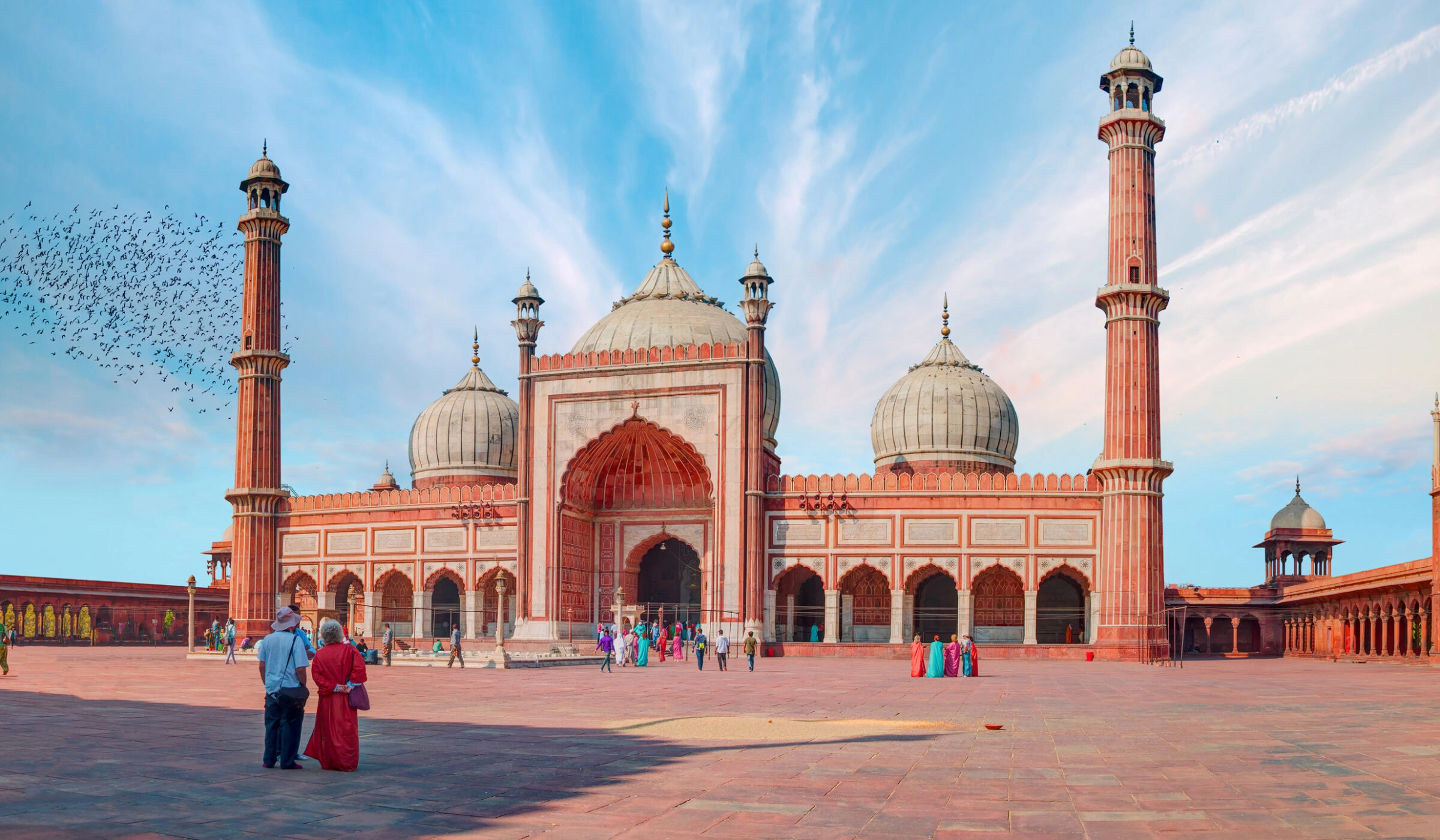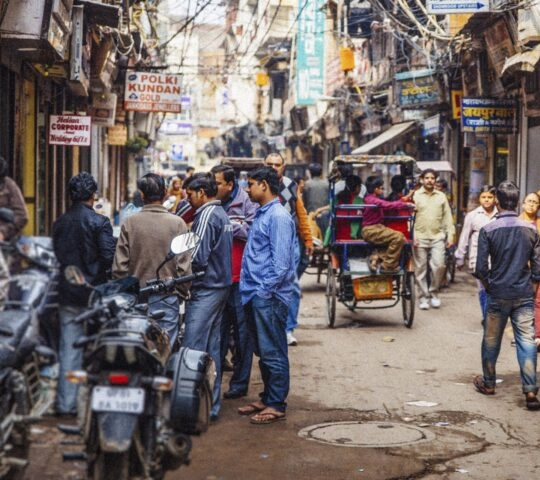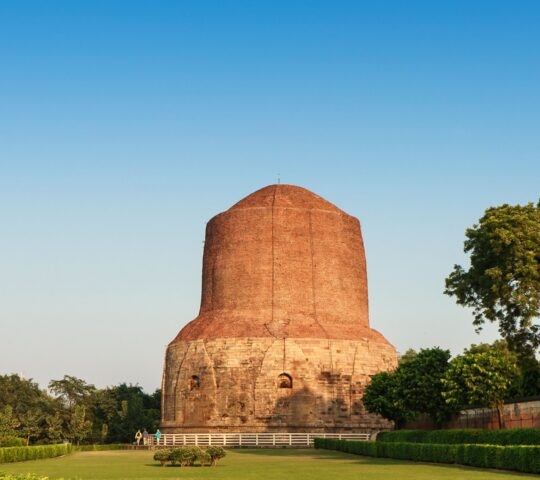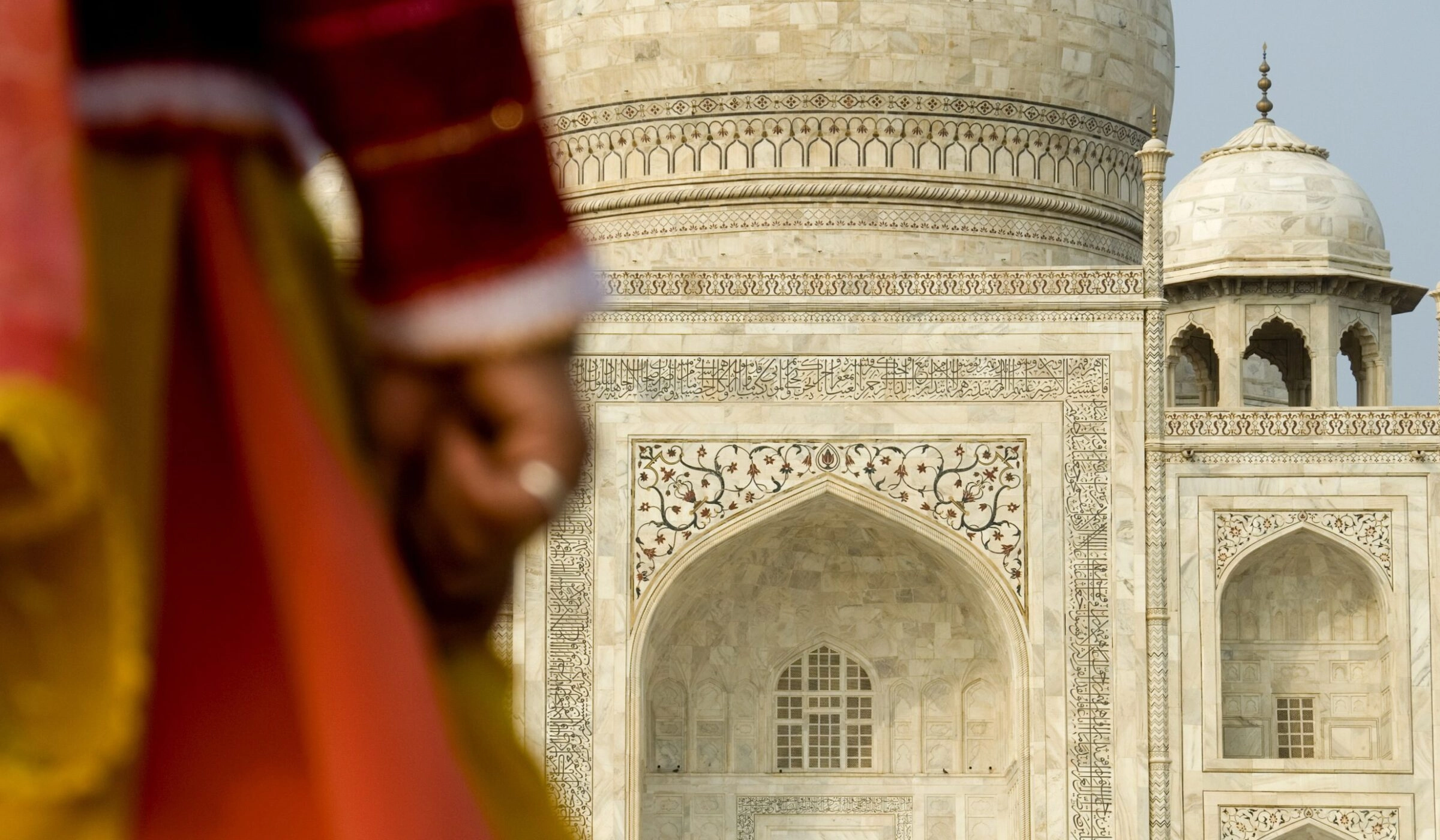- Days 1–3Delhi
- Days 3–6Bandhavgarh National Park
- Days 6–7Khajuraho
- Days 7–8Delhi
- Days 8–9Varanasi
- Days 9–11Agra & the Taj Mahal
- Days 1–3Delhi
- Days 3–6Bandhavgarh National Park
- Days 6–7Khajuraho
- Days 7–8Delhi
- Days 8–9Varanasi
- Days 9–11Agra & the Taj Mahal
Tigers, Temples and the Taj
India is home to some of the world’s most fascinating architecture, reflecting its rich culture and many faiths. Explore its multitude of temples, including the world-famous Taj Mahal, and get under the skin of the fascinating cities of Delhi and Varanasi. You’ll also go in search of majestic tigers in Bandhavgarh.
Trip highlights
- Explore the labyrinthine streets of Old Delhi with a local guide
- Head out on a thrilling tiger safari in Bandhavgarh National Park
- Discover the grand architecture of New Delhi
- Take a morning boat ride on the River Ganges followed by a walking tour of Varanasi
- Visit some of the most significant temples in the Khajuraho complex
- Enjoy the truly magical experience of visiting the Taj Mahal at sunset
Bespoke trips with Jacada
We design one-of-a-kind journeys incorporating luxury in all its forms. Our bespoke trips include:
- Luxury accommodation throughout
- Privately guided tours
- Private transfers
- Meticulously selected experiences
- Expertise and support from your Jacada Concierge

Itinerary in detail
Every Jacada trip is tailored to your personal preferences and interests. Below you’ll find a sample itinerary to inspire your own custom-designed journey.
Days 1–3
Diverse Delhi
With a population of over 18 million, Delhi is an international metropolis. Perhaps daunting at first sight, a little exploring soon reveals a rich, diverse and fascinating culture. Throughout most of its history, it has served as the capital of various kingdoms and empires, captured and rebuilt time and time again. Every dynasty left its mark and as you start to explore, you’ll discover reminders and relics from this colossal game of pass the parcel. As well as centuries worth of history to explore, Delhi is also one of the best places in India to shop, try the many different styles of food and experience the buzz of the city.

Where you could stay
Make it mine
Back in time
Grand architecture
For the children

Old Delhi tour
In complete contrast to the new city, the old city is a labyrinthine maze of lanes overhung by a tangled mass of electric wires. Within this chaos lies a semblance of order – each lane in this area is dedicated to a particular item, rather like a department store. There are lanes selling bangles, grocers, items used in weddings, silverware, clothes, spices and shoes. Sharing the same space are vendors with carts selling a variety of items, street side dentists, natural healers and cobblers. The old city has space for all professions. You will explore the old city in cycle rickshaws and will also walk along some of the more interesting alleys.

New Delhi tour
Explore New Delhi, an area within Delhi built as the seat of the British Indian government in the early twentieth century. Much of the design was by architect Edwins Lutyens, and thus it is referred to as Lutyens’ Delhi, who invented his own order of classical architecture. There are grand buildings, such as Rashtrapati Bhavan (formerly known as Viceroy’s House), as well as the Lutyens Bungalow Zone, a green area of residential buildings that has the most expensive real estate in India and possibly the world. You’ll also see Humayun’s Tomb, built in 1570 as the first garden-tomb on the Indian subcontinent.

Salaam Baluk Trust tour
Take some time to learn about the Salaam Baluk Trust and their work with disadvantaged children in India, while you head out an enlightening tour with some of the youngsters who have been involved with the project. The trust’s mission is to help children experience their childhood in a safe environment and turn their dreams into reality.
Days 3–6
Wild Bandhavgarh
Bandhavgarh National Park is one of India’s most popular national parks and hosts what is thought to be the highest densities of Bengal tiger in the country. Cave paintings and the ancient ruined fort from which the park takes its name are thought to be 2000 years old and the forests were long maintained as a preserve for the Maharajas and their guests.

Where you could stay
Tiger safari in Bandhavgarh National Park

Explore a range of habitats here, from rugged hills to wide open valleys splitting grasslands flanked by Sal forests and bamboo thickets. There is a rich biodiversity to be found, and along with tiger you’ll be looking for on this safari, the park is home to leopard, sloth bear, dhole (Asian wild dog), the four-horned chousingha, immense gaur Indian bison, spotted deer, nilgai and even the occasional Indian wolf. There are also well over 150 bird species to spot, including pairs of graceful sarus cranes.
Days 6–7
Remarkable Khajuraho
The small town of Khajuraho is home to a remarkable collection of temples, famous for their erotic carvings. Built by the Chandella dynasty between 950 and 1050, the temples were abandoned after the demise of the regime at the hands of the Delhi Sultanate. They became swallowed by the surrounding jungle and lay hidden until they were rediscovered by the British in 1883. Although predominantly representing the Hindu faith, there are a number of temples dedicated to Jainism, and discovering the intricate details of each and every one is part of the fun of a visit here.

Explore the Khajuraho temples

Visit the most significant temples in this magnificent complex. The jewel of the western group is the Kandariya Mahadev temple which is known for its exquisite sculptural embellishments. You will also visit the eastern group. The most remarkable among this temple group is the Parsvanatha temple build in AD 975 and known for its three exquisite sculptures of aspsaras – celestial nymphs in Hindu mythology. It is also known for its intricately carved ceiling pendants.
Days 7–8
Overnight in Delhi
Take a flight from Khajuho to Delhi, where you will spend the night before driving on to Agra and then Varanasi. Either spend your short time back in this busy city relaxing, or explore a little at your leisure.

Where you could stay
Days 8–9
Spiritual Varanasi
An ancient settlement on the banks of the Ganges, Varanasi is India’s spiritual capital and important among numerous faiths. Varanasi’s 84 ghats – stone embankments that step down into the river – are its most iconic sight. Most are crowded with pilgrims performing ritual ablutions in the river waters while a few are used solely for cremation. Sublime and sometimes shocking to visitors, the whole experience is utterly unforgettable. The rest of city is home to some 23,000 temples, the sandstone Ramnagar Fort and numerous centres of education, philosophy, music and art. Small-scale industries and household production employ most of Varanasi’s residents and its winding alleyways are one of the best places to find fine silks, carpets and crafts.

Where you could stay
Make it mine
River and road
Sacred site

Ganges boat ride and old city walking tour
This morning you will be taken for a boat ride on the River Ganges. After the boat ride you will meet a local expert on the ghats who will lead you on a private walking tour in the old city. On this walk you will see the back alleys, old havelis, temples, labyrinth of streets, street vendors and pilgrims that line the banks of the Ganges.

Tour of Sarnath
Head out of Varanasi to visit the sacred site of Sarnath. It is here that Buddha is believed to have set in motion what Buddhists call the Wheel of Dharma by delivering his first sermon to the five companions with whom he had sought enlightenment. Together with him, they formed the first sangha, or company of Buddhist monks. You’ll explore the ancient stupas and make a visit to the small but excellent museum at the site.
Days 9–11
Magnificent Agra
It has graced the pages of books for centuries but nothing quite prepares you for seeing the Taj Mahal for the very fist time. The ultimate symbol of eternal love, this is one of India’s most memorable and emotive sights. The Taj Mahal sits on the banks of the holy Yamuna River within 42 acres of beautiful gardens. The domed mausoleum sits 52m above the river bank, surrounded by minarets on all four sides. It is flanked by a mosque and a guest house, both made from red sandstone and mirror images of each other. There is no denying that the Taj Mahal, one of the Seven Wonders of the World, is one of the main reasons people visit Agra. However, it’s well worth lingering to explore the city’s magnificent fort that lies just 3km to the west.

Where you could stay
Sunset visit to the Taj Mahal

Visiting the Taj Mahal at sunset is a truly magical experience, as the light plays on the marble of the tomb and its reflection shimmers in the water. Heartbroken after the death of his favourite wife, Mumtaz Mahal, during the birth of their 14th child, Shah Jahan set about building the world’s most beautiful monument in her honour. It took a workforce of more than 20,000 men 22 years to build, painstakingly making sure every slab of marble, precious stone and stroke of calligraphy was perfect. It is undoubtedly one of the most impressive sights on earth and the world’s greatest symbol of love.
Jacada planned a glorious 11-day trip to northern India--and kept us safe and healthy! We are in our 70s, and unafraid to travel with Jacada. (Jacada also took us on a marvelous trip to Machu Picchu and the Galapagos a year ago.) First, we had an unimaginably excellent India guide--Mangit. He is incredibly knowledgeable, thoughtful, caring, and funny. I use…
Why book with Jacada

Personalised design
We’ll plan your trip around your personal interests, tastes and preferences, providing honest advice based on first-hand knowledge.

Authentic experiences
Our expert guides and brilliant Concierges are hand-picked for their ability to bring your destination to life with care and passion.

Positive Impact
We seek out unforgettable experiences that benefit both local communities and the environment.





























